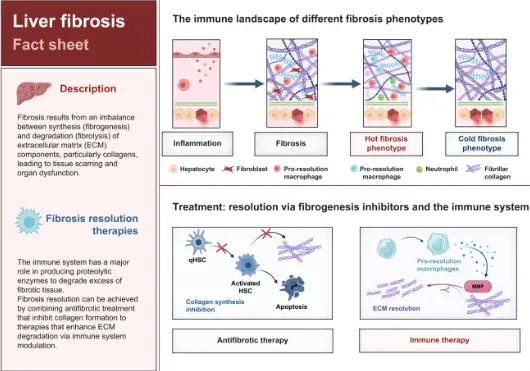Hot and Cold Fibrosis – A Novel Concept
March 11, 2025
We recently published an open assess review, where we and our collaborators have investigated the novel concept of “hot” and “cold” fibrosis—published in the Journal of Hepatology.

Fibrosis is a pathological condition characterized by excessive accumulation of extracellular matrix (ECM) components, particularly collagens, leading to tissue scarring and organ dysfunction. The concept of “hot” and “cold” fibrosis has recently emerged to help understanding the immune landscape within fibrotic tissues and how ECM and immune cell interactions could be new targets for future fibrosis treatment.
This review provides a new angle of describing fibrosis as “hot” or “cold”, which refers to the immune status within fibrotic tissues and the nature of fibrogenic signaling. Whereas hot fibrosis is characterized by active immune cell infiltration and inflammation, cold fibrosis is associated with auto- and paracrine myofibroblast activation, immune cell exclusion and quiescence.
We demonstrate that pharmacodynamic biomarkers reflecting ECM remodeling are promising tools to monitor fibrotic and inflammatory processes in hepatic diseases, allowing to identify disease profiles associated either with hot or cold fibrosis. This also enables tailored strategies—such as combining anti-fibrotic drugs with immune-stimulating therapies—to optimize treatment efficacy.
Article: Hot and cold fibrosis: The role of serum biomarkers to assess immune mechanisms and ECM-cell interactions in human fibrosis



